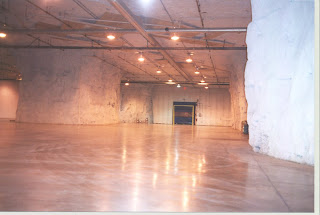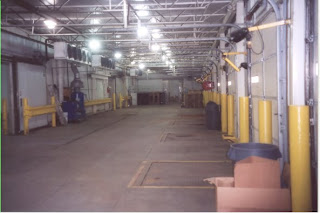Small Industrial Markets and demand for refrigerated building real estate.
There always is a limited demand in a smaller industrial market for refrigerated buildings. This demand is simply defined as "distance” from the refrigerated building that is for sale or for lease. The demand which is “distance” from the building is generally held to be 20 miles in a small industrial market. Whatever business the prospect is involved in which motivates the use of an industrial freezer or cooler warehouse building, will then always have a customer base that supports the food distribution or food processing business of the prospect. Every customer base has a tolerance on how many miles they will drive to consume/purchase any certain goods or services. There always be some variance from that "20 mile" figure according to what type of good or service will be purchased. The more frequent the consumption/purchase the less the mileage tolerance will be of the prospect’s customer base.
Most typically the prospective purchaser or lessee for refrigerated building in a small industrial market has outgrown their freezer and cooler building. Sometimes the purchaser has have been in several different facilities and will need to consolidate for one of two reasons. The first reason is that a rental property was no longer available to the prospect to occupy, for such reasons as the end of the lease term or eminent domain. The second reason is that consolidation into one single refrigerated building location will now result in lower operating costs for the prospect’s business operations.
Usually most of these businesses are owned by individuals that have a desire to purchase rather than lease so as to be able to build equity in the industrial freezer or cooler building and therefore increase their own personal net worth. Any prospective purchaser of a building will look at the replacement cost [new construction] when considering buying a used industrial food processing or distribution building for their own use. This consideration of new construction is because there is usually not any recent sales comparables a "similar and like Industrial buildings" in the small industrial market. The new construction price will always be a benchmark in establishing a sale price for the used industrial facility.
When marketing industrial real estate in a small industrial market it is always important to remember that the highest likelihood that the best prospects for the sale or lease of the refrigerated facility will be from within a 20 mile radius of that refrigerated facility. As the real estate broker saying always goes, "sell it to the neighbor".
Hawk Distribution Services, LLC has experience in offering refrigerated warehouse buildings for sale or for lease in rural industrial markets. Contact Jim Cronin, a refrigerated building real estate broker at 314-994-0577 e-mail of j.cronin@hawkds.com
To view refrigerated buildings for sale or freezer warehouse space for lease in St. Louis, Missouri and Kansas City, Missouri and other areas in the Midwest go to www.hawkds.com



 Jim Cronin, Broker
Jim Cronin, Broker

